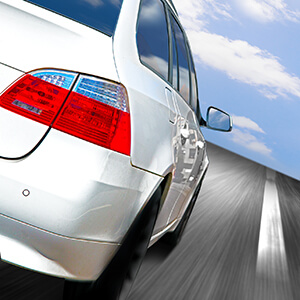
How we choose to behave while driving could have serious consequences, perhaps a ticket or worse, an accident. Avoid the following five bad driving habits and not only will you be a safer driver, but you'll also help keep your insurance premiums in check.
- Have you gotten a ticket recently? Some insurers are more forgiving than others when it comes to having a ticket or two on your record. Compare car insurance rates today to make sure you're getting the lowest car insurance rates possible.
Distracted driving
Every province in Canada has a distracted driving law. Distracted driving isn't just about taking phone calls, texting or playing with your GPS system while driving; it's also about eating, putting on make-up, and shaving. A good rule of thumb to drive by is if it requires that you take your eyes or attention away from the road, it can wait.
Failing to signal
Drivers who signal late, or worse don't signal at all, are a major pet peeve for many motorists. Turning on your signal isn't just a courtesy; you can get a ticket for failing to let people know what you are planning to do. This easy-to-do act can make a big difference in keeping you and your passengers safe.
Speeding
The posted limit isn't a suggestion; it's the maximum speed you should be driving when conditions are ideal. When conditions are not ideal adjust your speed accordingly. If you speed, or do not drive according to the weather and road conditions, don't be surprised if you see a police cruiser behind you.
- Did you know speeding consumes more fuel than driving the limit? Spend less on gas (and avoid a ticket) by going the limit.
Following too closely
Tailgating is an aggressive move and can easily lead you to rear-end the car in front of you if they brake suddenly. Keep a safe distance between yourself and the vehicle in front of you. What makes a safe distance? Under normal driving conditions, safe spacing can be determined with the 2-second rule; a 2-second interval from the time the car in front of you passes a fixed object until you reach the same object. Simply count it out slowly; one thousand and one, one thousand and two. In bad weather, double the two-second rule.
Unsafe lane changes
Drivers in the lane that you are looking to move into, expect you to stay where you are. In order to change lanes safely: check your mirrors, check your blind spot, signal your intentions and steer gradually into the new lane when the coast is clear. Be sure to maintain your speed as too often people slow down as they change lanes. Don't forget too, that you should never cut in front of another vehicle, weave in and out of traffic, or change lanes in or near an intersection.
Safer driving makes dollars and sense too
Safety comes first, of course, but don't forget the affect that bad driving traits (and their potential consequences) can have on your auto insurance. Drivers without tickets or accidents typically pay less for auto insurance. It's as simple as that.




